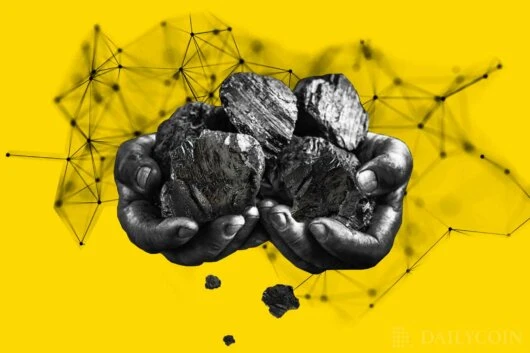Sep 14, 2022 12:25
<p>As the Ethereum Merge draws nearer, there is an inevitable build-up of hype and excitement, with a sprinkling of fear and doubt, not to mention some confusion and misconceptions.</p><p>What Will Happen during the Merge?</p><p>At the time of the Merge, which is estimated to occur on September 15th, Ethereum will transition from a proof-of-work blockchain to a proof-of-stake blockchain.</p><p>
It’s referred to as a merge because it entails the bringing together of the Ethereum Mainnet (that’s the current, proof-of-work layer) and something called the Beacon Chain, which is proof-of-stake and has been running in parallel to the Mainnet since December 2020.</p><p>
The Beacon Chain then takes over and becomes the main consensus layer, with all the existing data and blockchain history being carried over to the new system, while users don’t have to make any adjustments.</p><p>
One analogy that has been used is that it’s like changing the engine while an aircraft is in flight keeping everything that is being carried on the plane intact and not interrupting the journey.</p><p>
There are many other blockchains that run successfully on proof-of-stake (such as Cardano and Avalanche), while the dominant proof-of-work cryptocurrency is Bitcoin itself, along with protocols such as Monero and Dogecoin.</p><p>
Ethereum has been planning to transition to proof-of-stake since its inception (the planned update was originally referred to as Ethereum 2.0), but the actual event has been repeatedly delayed.</p><p>What Will Change?</p><p>The proposed advantages of using proof-of-stake have been clearly laid out by the Ethereum Foundation. Chief among them is an enormous reduction in energy consumption, and the clearing of the way towards a process known as sharding.</p><p>Sharding is a data distribution method that can be used, along with layer 2 solutions, to scale the Ethereum network, enabling faster transaction times and significantly reduced transaction costs.</p><p>
These points, speed and costs, are critical, since outsized transaction fees have been a continuing point of criticism, and are a major obstacle to Ethereum gaining mainstream adoption.</p><p>If, post-Merge, Ethereum can scale effectively while maintaining security and decentralization, then it can be argued (as long as adoption continues to grow) that it will have achieved its aims.</p><p>Why Are There Concerns?</p><p>
It’s important to note that transitioning to proof-of-stake does not in itself reduce transaction costs and that the Merge simply opens the way to improved scaling, including the reduction of transaction costs.</p><p>Further concerns revolve around the possibility of there being still unidentified bugs, and, considering how much capital is flowing around or stored on the Ethereum network, the risk of security breaches.</p><p>
There are also potential issues around decentralization and censorship. In a proof-of-stake system, those who stake enough ETH and run validator nodes have a degree of control over the network, and so the extent to which nodes are evenly distributed becomes a matter of interest.</p><p>
Naturally, there will be questions around the implications if, as reported recently by crypto analytics platform Nansen, 64% of staked ETH is controlled by just five entities, and there are concerns about whether this represents a threat to real decentralization.</p><p>Shifted Perceptions and Adoption</p><p>The Ethereum Merge will change wider perceptions, even if, at first, nothing alters in ways that are immediately tangible to regular Ethereum users. Crypto, after all, is often centered around and driven forward by malleable narratives.</p><p>As such, Ethereum switching to proof-of-stake should clear the path for increased mainstream adoption. The technical details of the change will not be delved into by everyone, but what’s important is the broader picture: that a major landmark (or a persistent obstacle) has been passed, and we can now move on to meaningful utility.</p><p>
Will gas fees immediately come down? No, but the route to that happening will have been established. Have we put concerns about energy use to one side? The truth is that not everyone agrees with energy concerns (bitcoiners convincingly argue the case for proof-of-work), but we can certainly conclude that the energy box has been ticked.</p><p>
Taking in the wider view, any entities who were interested in the web3 narrative but were hesitant about taking the plunge might perceive the Merge as a catalyst signaling that now is an appropriate time to make a start with blockchain technology.</p><p>
If, concurrently, we see an apparent bottoming of the crypto market moving into sideways movement, or even some modest gains, then this will add to the feeling that the ship has steadied, risks will eventually subside, and a cautiously optimistic attitude towards crypto, partly rebranded as web3, can start to return.</p><p>
The corporate world tends towards a conservative attitude and, up to now, Ethereum (and crypto in general), has been the antithesis of this: unable to complete the Merge, hugely volatile and utilized most conspicuously by developers testing out bizarre concepts where NFT tech meets outsider art.</p><p>NFT-focused proofs of concept on the colorful fringes are thrillingly eccentric and throw around some eye-catching price tags, but aren’t packaged in ways that appeal to risk-averse institutions.</p><p>However, with the Merge comes an indicator that not only can Ethereum play host to the creatively experimental, but that it has matured as a product, and might now be capable of taking a step up to widespread utilization across sectors.</p><p>
In this respect, Ethereum’s path could emulate that of the earliest web pioneers, who, over time, moved in from the tech frontiers to construct the digital infrastructure upon which business is now conducted.</p>
This article was written by Sam White at www.financemagnates.com.















